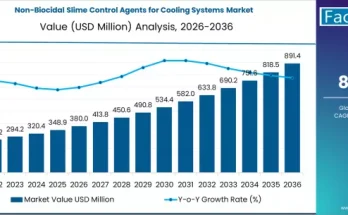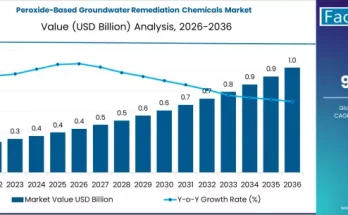Plants not only require water and sunlight to grow but they also require a balanced diet of essential nutrients that may be available only in very small amounts. This is where chelated micronutrient fertilizers spring into action: by providing trace elements to plants in the form they can most readily absorb. Various factors including global population growth and increasing food demand are pushing farmers to rely on micronutrient fertilizers like chelated ones. These are preferred as they boost crop yields.
In fact, by 2050, agricultural output will need to increase by 70% to feed the global population, making chelated fertilizers critical for efficient farming. Moreover, Chelated micronutrients are more efficient compared to traditional fertilizers. They allow plants to absorb essential nutrients like iron, zinc, and copper much more effectively, which can reduce fertilizer waste by up to 30%. These fertilizers have become increasingly popular lately due to increasing demands for the use of more efficient and environmentally responsible agricultural practices.
Various other factors are driving the growth of the chelated micronutrient fertilizer market:
- Increasing Interest in Sustainable Agriculture – Most people are becoming increasingly concerned about whether food security can be achieved or the planet protected through truly ecological agriculture, and there is growing interest among farmers in practices for improving soil health and reducing chemical runoff. Chelated micronutrient fertilizers would fit neatly into this story: Superior uptake of nutrients, therefore low-frequency repetitions for better impacts on the environment.
- Increasing Need for Quality Crops – As consumers care more about their health, a growing demand for organic, nutrient-rich food arises. Farmers’ response to this new trend was an investment in fertilizers rich in micronutrients with the hope of raising crop quality and yield. The incorporation of chelated fertilizers ensures easier uptake of important nutrients such as iron, zinc, and manganese, thereby promoting healthier crops that attract higher prices.
- Advances in Chelation Technology – The chelation process itself has been advancing with time. New agents are developed for chelation that better enhances the effectiveness of such fertilizers for various soil types. Now, even on acidic and alkaline soils as well as in salty soils, modern, chelated fertilizers have been designed in a manner that they start releasing the required amount of nutrients to plants.
The chelated micronutrient market is ripe with opportunities, especially as the global demand for food and sustainable farming practices keeps going up. Here are some key areas of potential:
- Expansion into Emerging Markets: Asia-Pacific and Latin America hold great potential for massive growth as chelated micronutrient fertilizers can be used there to improve productivity through modern agricultural techniques being followed there. Governments offer incentives to promote sustainable farming practices and have improved the general environment for market growth.
- Product Formulation Innovations: – Companies that focus on innovation—be it from the perspective of bio-based chelation agents or slow-release technologies—would likely thrive. Innovation would appeal to the environmentally conscious farmer and save on long-term soil health application costs.
- Accurate Agriculture Adoption: Increased use of smart farming technology necessitates the exact application of nutrients by way of data and AI. Efficient chelated micronutrient fertilizers work well in this system to some extent. The farmers can receive real-time information about nutrient levels, which helps them apply the minimum amounts required; waste can be minimized and, by extension, the yield.
No market is immune to its challenges, and this market is no exception. Here are some of the barriers companies and farmers face:
- High Production Costs: Chelated micronutrient fertilizers, though very effective, are usually more expensive to produce compared to conventional fertilizers. The prices of chelating agents, coupled with complicated production processes, make fertilizers expensive to small-scale farmers, especially those in cost-sensitive markets.
- Lack of Awareness Among Small-Scale Farmers: This would present a challenge for small-scale farmers since large-scale commercial farms adapt very rapidly to new technologies. Most of them have never even heard of chelated micronutrient fertilizers. This will present immense education and outreach to enhance market penetration, especially in developing countries, since most of the farming is small-scale.
Key companies in the market are striving to differentiate themselves through various factors such as innovation, sustainability, and product quality. But certain factors make it a highly competitive market.
Key companies in the market such as BASF SE, AkzoNobel, and Nutrien Ltd. comprise of maximum share of the market, pushing small players to focus on regional demands. Moreover, these global key players also benefit from extensive R&D investments and well-established distribution networks, giving them a major competitive edge. As competition intensifies, key players are focusing on developing differentiated products—customized chelated blends that cater to specific crops, soil types, or regional conditions. Innovations in chelation agents and the formulation of micronutrients that boost absorption rates are pivotal in gaining market share.
As demand for food rises across the globe, farming is becoming increasingly efficient. Under the same sustainability concerns, the agricultural industry is shifting towards more environmentally friendly practices, and these fertilizers help plants absorb essential nutrients better. Another huge driver for this market is innovation. The science of chelation is advancing with new technologies and precision farming, meaning smarter and more effective products for application in agricultural systems. Now, farmers can treat their usage of nutrients much more critically so that crops get exactly what they need without wasting those resources.
Geographically, high prospects are visible in emerging markets, especially Asia-Pacific and Latin America. With agriculture in these regions increasingly transforming towards a modernized means of handling produce, the demand for such productivity-enhancing and sustainable-enhancing products will only grow upwards and onwards.
On the other hand, one of the biggest challenges that the market has to overcome is the fact that most small-scale farmers are not fully knowledgeable about the value that chelated micronutrients can add to their operations. Educating these farmers on how these products can improve their yields will unlock the full potential of this market.


